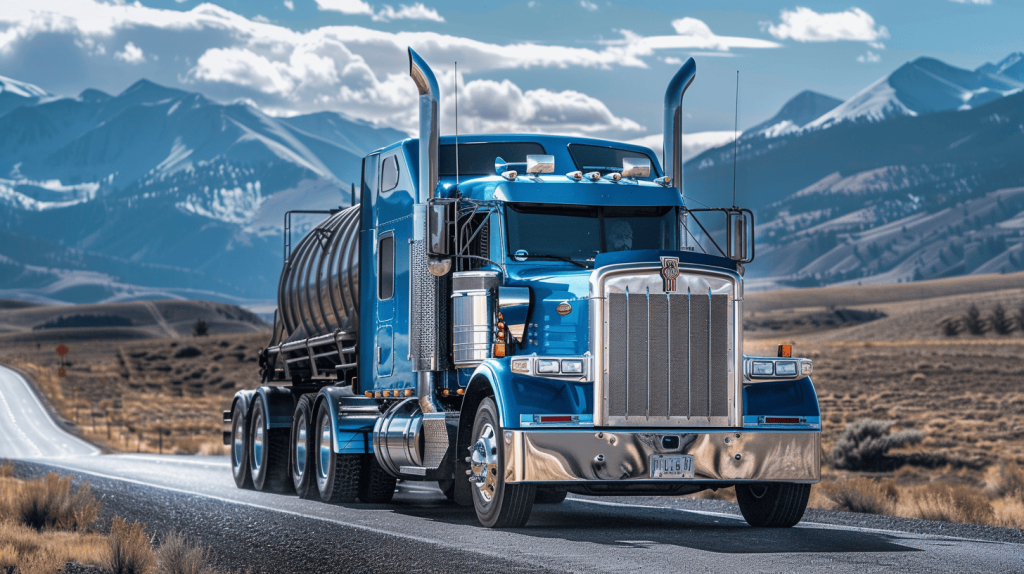Wisconsin Truck Weight Limits
Freedom Heavy Haul can offer expedited Pickup and Delivery for any size shipment anywhere in the USA. Contact us today for No Hassle, No Pressure Pricing.
Navigating the intricacies of truck weight limits in Wisconsin is crucial for truck drivers and companies to ensure compliance and safety on the roads. The regulations set forth by the Wisconsin Department of Transportation (WisDOT) serve not only to maintain infrastructure integrity but also to promote safe travel across the state’s highways and local roads. This comprehensive guide dives into the essentials of ensuring safe and compliant heavy haul transport in Wisconsin, providing a valuable resource for those operating within the trucking industry.
Overview of Wisconsin Truck Weight Limits and Regulations
The regulatory landscape for trucking in Wisconsin encompasses a range of statutes and guidelines designed to manage the impact of heavy vehicles on roadways. These rules are in place to balance the transportation industry’s needs with public safety and the preservation of road infrastructure.
Introduction to Truck Weight Limits
Truck weight limits are established to prevent damage to roads and bridges, which can be caused by vehicles carrying loads that exceed the structural limits of these infrastructures. Adhering to these weight limits is also a matter of legal compliance, as violations can lead to significant penalties. It is essential for truck operators to understand these limits to ensure safe transport in Wisconsin.
WisDOT’s Role in Regulation Enforcement
WisDOT plays a critical role in enforcing truck weight limits, issuing permits for oversize and overweight vehicles, and providing guidance to ensure that trucking operations comply with state laws. Their oversight helps maintain the balance between efficient commercial transport and ensuring compliance with heavy haul regulations.
Understanding Statutory Weight Limits
Statutory weight limits set the standard for what is legally permissible for truck weights on Wisconsin roads without requiring special permits. These limits are the baseline for determining when an overweight or oversize permit is necessary.

Definition and Importance of Statutory Limits
Statutory weight limits refer to the maximum weight a truck can legally carry, including the vehicle’s weight and its cargo, without special authorization. These limits are crucial for protecting roadways and ensuring that vehicles can safely navigate bridges and roads without causing undue wear and tear or posing a risk to other road users.
Standard Weight Limits for Trucks
In Wisconsin, the general weight limits without a special permit are as follows: a single axle limit of 20,000 pounds, a tandem axle limit of 34,000 pounds, and a Gross Vehicle Weight (GVW) limit of 80,000 pounds. These limits are designed to accommodate the majority of standard trucking operations while protecting the state’s road infrastructure.
Special Permits for Overweight and Oversize Loads
For loads that exceed the statutory weight limits, special permits are required. These permits allow for the legal transport of oversize or overweight loads under specific conditions and routes.
Criteria for Obtaining Special Permits
Special permits are issued based on the nature of the load, the vehicle’s dimensions, and the intended route. Non-divisible loads, which cannot be easily separated into smaller loads for transport, often qualify for these permits. The criteria for obtaining a permit include ensuring that the transport of such loads is done safely and with minimal impact on public infrastructure.
Types of Permits and Issuing Authorities
WisDOT offers various types of permits catering to different needs, such as single trip, annual, and seasonal permits. Local highway maintenance authorities may also issue permits for travel on roads within their jurisdiction, ensuring that trucks comply with local as well as state regulations.

Application Process for Overweight/Oversize Permits
The application process for obtaining a special permit involves submitting detailed information about the vehicle, the load, and the planned route. This process is facilitated by WisDOT’s online system, ensuring a streamlined approach to securing safe transport permits in Wisconsin.
Axle Weight Regulations
Axle weight regulations specify the maximum weight that can be carried by each axle of a vehicle, helping distribute the vehicle’s total weight evenly to reduce road damage. Understanding these regulations is vital for safe and compliant heavy haul operations in the state.
Maximum Allowable Weights Per Axle
The maximum allowable weight per axle is set to prevent excessive pressure on any single point of the road surface. In Wisconsin, the limits are 20,000 pounds for a single axle and 34,000 pounds for a tandem axle group.
Impact of Axle Configuration on Weight Limits
The configuration of a truck’s axles plays a significant role in determining its total allowable weight. Vehicles with more axles can distribute their load more evenly, potentially allowing for a higher total weight within the legal limits.
Guidelines for Overweight and Oversize Vehicles
Operating vehicles that exceed standard size or weight limits requires adherence to specific guidelines, ensuring that these larger loads do not pose a danger to roadways or public safety.
Regulatory Framework for Exceptional Loads
The regulatory framework for exceptional loads includes requirements for route planning, vehicle marking, and, insome cases, escorts for safety. These measures ensure that the transport of oversized or overweight loads is managed in a way that minimizes risk to infrastructure and public safety.

Non-Divisible Loads and Special Considerations
Non-divisible loads, due to their size or weight, cannot be broken down into smaller, legal-weight shipments. Special considerations for these loads include obtaining the appropriate permits and adhering to specific transport guidelines, such as travel during certain hours or days to minimize traffic disruption.
Compliance, Penalties, and Safety
Compliance with weight regulations is not only a legal requirement but also a critical component of road safety. Violations of these regulations can result in significant penalties, including fines. Ensuring compliance with Wisconsin’s heavy haul regulations helps avoid costly consequences and keeps both operators and the public safe.
Enforcement Actions and Penalties for Non-Compliance
Wisconsin enforces truck weight limits through roadside inspections, weigh stations, and portable scales. Penalties for non-compliance can include fines, which are typically based on the amount by which the vehicle is overweight, and potentially more severe legal consequences for repeated offenses.
Safety Considerations and Infrastructure Preservation
The primary goal of truck weight regulations is to ensure the safety of all road users and to preserve the integrity of the state’s roadways and bridges. Overweight vehicles can cause significant damage to road surfaces and structures, leading to costly repairs and posing hazards to safety.
Resources for Trucking Professionals
Wisconsin provides numerous resources to assist trucking professionals in understanding and complying with weight regulations, including online tools and detailed guides.
Official WisDOT Resources and Information
WisDOT’s official website offers a wealth of information, including detailed regulations, permit applications, and contact information for further assistance. Trucking professionals are encouraged to utilize these resources to ensure compliance and safe operations.
Calculating Tools and Resources for Compliance
Online tools, such as Oversize.io, provide valuable assistance in calculating permits and escort costs, as well as in planning routes that comply with weight limits and restrictions. These tools can help operators avoid penalties and ensure safe, efficient transport of goods.
Conclusion
Adhering to Wisconsin’s truck weight limits is essential for the safety of truck operators and the public, as well as for the preservation of the state’s road infrastructure. By understanding and complying with these regulations, trucking professionals can contribute to safer roads and avoid the costs associated with non-compliance. Utilizing resources that help with safe and compliant heavy haul transport in Wisconsin is key to successful operations.
Additional References and Resources
For more detailed information and guidance on Wisconsin truck weight limits and regulations, visiting the WisDOT website and utilizing online compliance tools are excellent first steps. These resources provide up-to-date information and practical assistance to help trucking professionals navigate the complexities of state regulations. This comprehensive guide has explored the key aspects of Wisconsin’s truck weight limits, including statutory limits, permit requirements, axle weight regulations, guidelines for oversized and overweight vehicles, compliance strategies, and available resources. By staying informed and adhering to these regulations, trucking companies and drivers can ensure they operate legally, safely, and efficiently within the state.







